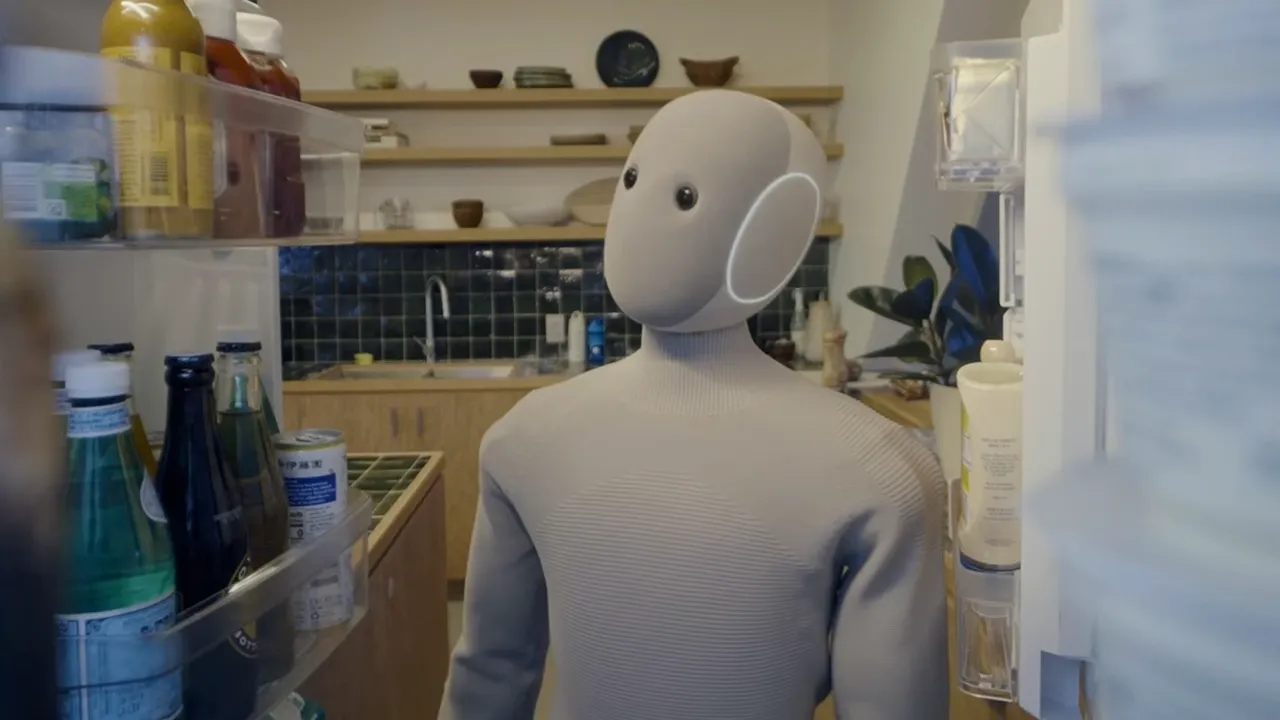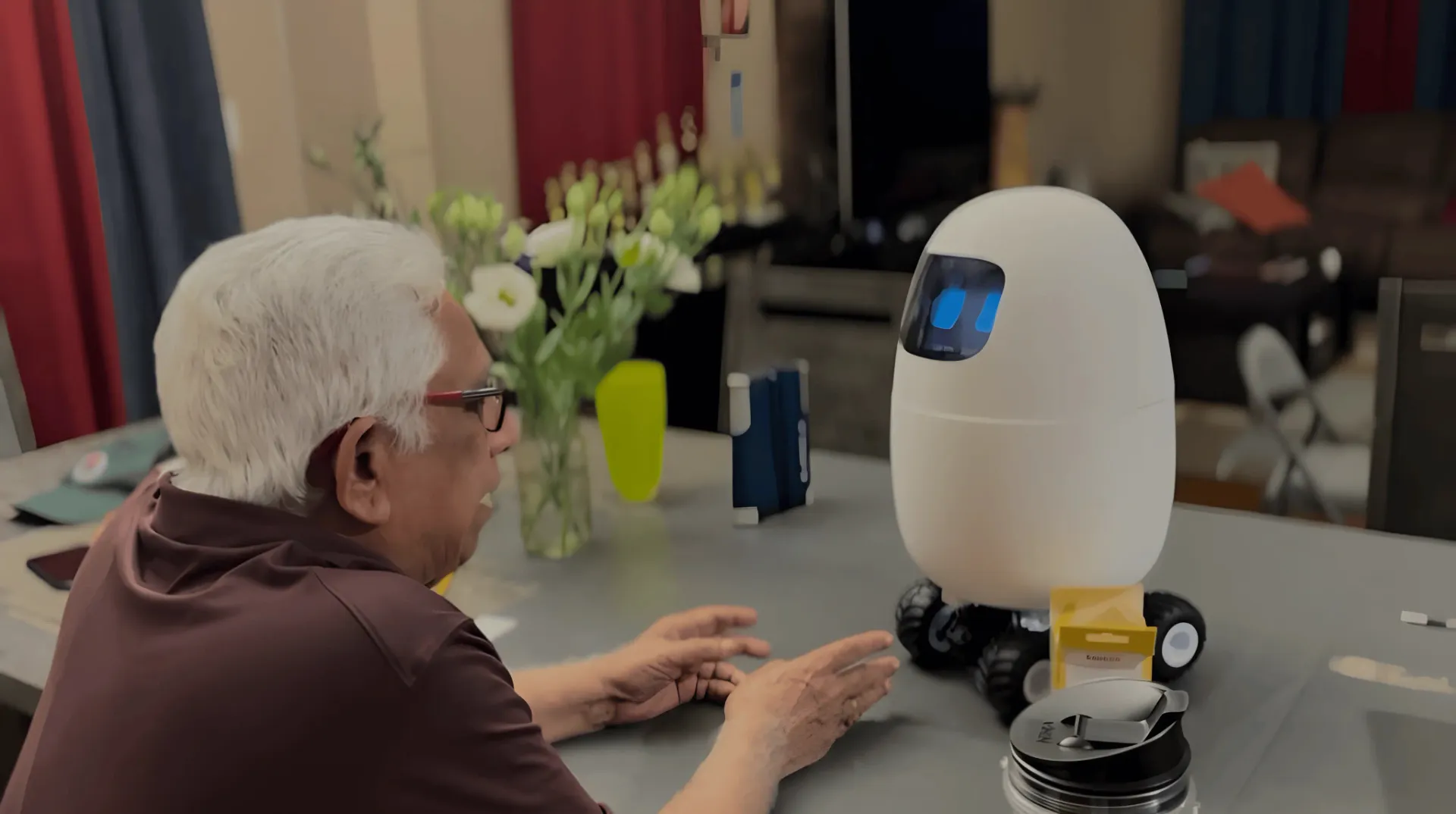- The Autonomy Gap: The NEO robot is marketed as an autonomous home assistant, but initial demonstrations show complex tasks (like folding clothes) rely heavily on a human-in-the-loop system called Expert Mode (teleoperation).
- Strategic Data Flywheel: The use of human operators is not a failure but a deliberate strategy to gather massive amounts of real-world, messy home data. Every teleoperated task is recorded, labeled, and fed into the Redwood AI model to accelerate generalized learning.
- The Reality Gap: The home environment is too complex to simulate fully (the "reality gap"). Real-world deployment is necessary to teach the robot generalized skills (e.g., recognizing different types of clothing, deciding on folding sequence, and understanding storage context).
- The 2026 Promise: 1X CEO Bernt Børnich has stated they hope to ship a "mostly fully autonomous robot in 2026." This means early adopters are buying into a continually improving platform via software updates, with significant autonomy expected upon delivery.
- Privacy Trade-off: The system raises significant privacy concerns, as the data collection model requires remote human operators to view the home environment through the robot's cameras. 1X attempts to mitigate this with "no-go zones" and user authorization.
If you've been following closely to the world of humanoid robotics, you will know a major moment just arrived: 1X Technology has officially debuted its home humanoid, NEO. A 167 cm machine in a soft, stylish jumpsuit available for pre-order, promising to finally bring the sci-fi dream of a domestic helper into our living rooms.
But here's where the story gets interesting. The launch has quickly turned into a fascinating, high-stakes debate between the promise of physical AI and the reality of consumer privacy. The price is $20,000, and its true capabilities are currently tied to a human operator watching through its cameras. Should we be excited, or is this the start of a new episode of Black Mirror in real life?
Meet NEO: The Future in a Onesie
Let's start with the hardware. NEO stands about 167 cm tall, weighs roughly 30 kg, and is intentionally designed with a softer, less intimidating — 3D lattice polymer. NEO is built for 3 objectives: Chores, Companionship and Autonomy.
Underneath the soft knitted exterior, the engineering is impressive. NEO boast an incredible power-to-weight ratio, capable of lifting up to 70 kg and carrying payload of 25 kg. Its movements are controlled by low inertia tendon drive—an actuation system that boasts 95% backdrivability for safe, gentle, and precise interactions around people. The total complexity is captured in its multiple joints, including 22 DoF in each hand for human-level dexterity.
For perception, it uses 2x 8MP fisheye cameras for vision and 4 microphones for 360° audio pickup. All this intelligence is driven by 1X Cortex compute model, which is based on the NVIDIA Jetson Thor platform, drawing power from a battery that provides approximately 4 hours of runtime. But the real magic lies in its "brain": the Redwood AI and the 1X World Model is a physics-grounded prediction system that estimates the success rate of various robotic actions, constantly accelerating the AI's learning.

The Human in the Machine
Public skepticism peaked shortly after the release of 1X's latest showreel, which prompted tough questions about NEO's actual autonomy. A close look at the official demo video confirmed the core issue: only two simple—opening a door and putting away dishes/cups—were clearly labeled "Autonomous".
The start reality check from The Wall Street Journal's video, "I Tried the First Humanoid Home Robot. It Got Weird. | WSJ," where reporter Joanna Stern demonstrated the robot's capabilities. Stern's test revealed just how reliant the system is on human intervention right now. One-hundred percent of the complex work shown in the test was done through Expert Mode, meaning it required a remote human operator to take the controls and guide NEO. This is the feature that has caused the most commotion. Expert Mode is essentially a teleoperation system, and the idea of a stranger looking through the robot's dual 8MP fisheye cameras inside your home is, for many, a glaring privacy violation.
%20I%20Tried%20the%20First%20Humanoid%20Home%20Robot.%20It%20Got%20Weird.%20_%20WSJ%20-%20YouTube%20-%203_40.webp)
1X Technology, however, has been quick to address these fears, insisting that privacy is paramount. CEO Bernt Børnich made the company's position clear, stating that teleoperators are unable to gain access directly without the owner's permission.
"So, we wanna, of course, make sure that we respect privacy as much as possible, and that it's always on your terms. You are always in control"
-Bernt Børnich, CEO of 1X Technology
To enforce this, 1X claims they are able to blur the user's faces in the video feed, and owners can set "no-go zones" in their house via the app. If a room—like a bedroom or bathroom—is designated a no-go zone, the robot cannot enter, even when a human operator is controlling it.
The Necessary Frontier of Embodied AI
So, is NEO a robot butler or just an expensive, remote-controlled toy? The answer depends on your perspective of the future.
The reliance on human operators is not a failure; it's a temporary, strategic necessity to address the ultimate challenge: bridging the reality gap. The human home is like a factory, chaotic and unpredictable—a space of infinite clutter, unpredictable objects, and soft physics that no simulation can perfectly replicate.
Consider the simple task of folding clothes. For a human, this is easy. For an AI, it requires a chain of complex decisions: NEO must first use its vision system to recognize the object: Is it a towel, a t-shirt, or a pair of socks? Then, NEO will decide on the appropriate, gentle folding sequence. And finally, NEO will need to understand the storage context: Does this t-shirt belong in the dresser drawer or on the closet shelf? This requires true general-purpose intelligence, not just a hard-coded routine.
%20I%20Tried%20the%20First%20Humanoid%20Home%20Robot.%20It%20Got%20Weird.%20_%20WSJ%20-%20YouTube%20-%206_17.webp)
This is where the data flywheel comes into play. Every time a remote operator steps in to guide the robot through a difficult chore like the folding example, that successful demonstration is instantly recorded, labeled, and fed back into the Redwood AI model. The first NEO will be less capable than the thousandth NEO, which will have learned from thousands of previous attempts across diverse homes.
This system of deep, generalized learning, guided by the internal 1X World Model to predict task success, is what makes the whole project a critical and necessary step for the future of physical AI.
Your Home, Their Lab?
This brings us to the ultimate choice facing consumers. The price tag for this technological leap is steep. You are essentially signing a social contact with 1X, agreeing to be a vital, early-stage "lab-rat" for the company's AI ambitions.
The problem lies squarely with expectations management. When the public hears the word "autonomous" regarding $20,000 home robot, the default assumption is a Rosie the Robot level of capability. This is why the current footage, showing the robot taking 2 minutes to fold a single shirt or struggling to manage a dishwasher, has led to public skepticism and even laughter from tech commentators like Marques Brownlee, who characterized the launch as "selling the dream".
However, NEO is an embodied intelligence platform that improves with every software update. 1X is betting on the accelerated data collection model—the "data flywheel"—to rapidly push the autonomous capabilities forward. Crucially, the company has stated its goal is to ship a "mostly fully autonomous" robot in 2026. This means the robot delivered to pre-order customers will not be the same one as Joanna Stern tested today; it will have months of real-world data from the Expert Mode training loops already integrated.
Ultimately, this project forces us to choose how we view early technology. Would you spend $20,000 to welcome a teleoperated robot into your home today, accepting the slow, imperfect "robotic slop" as a necessary path to fueling the autonomous future? Or is the cost—both financial and in terms of privacy—too high for a dream that is still visibly learning to walk? The success of NEO depends on whether early adopters are buying a finished product, or buying into a vision of what "true autonomy" will become.





.jpeg)
